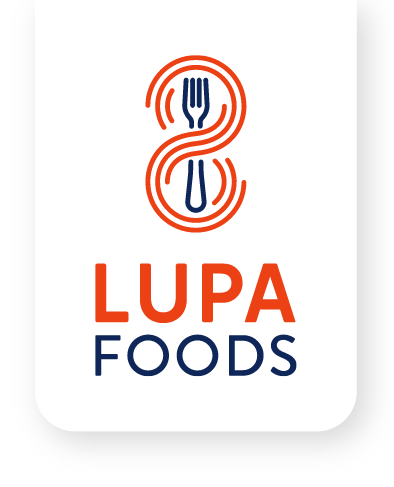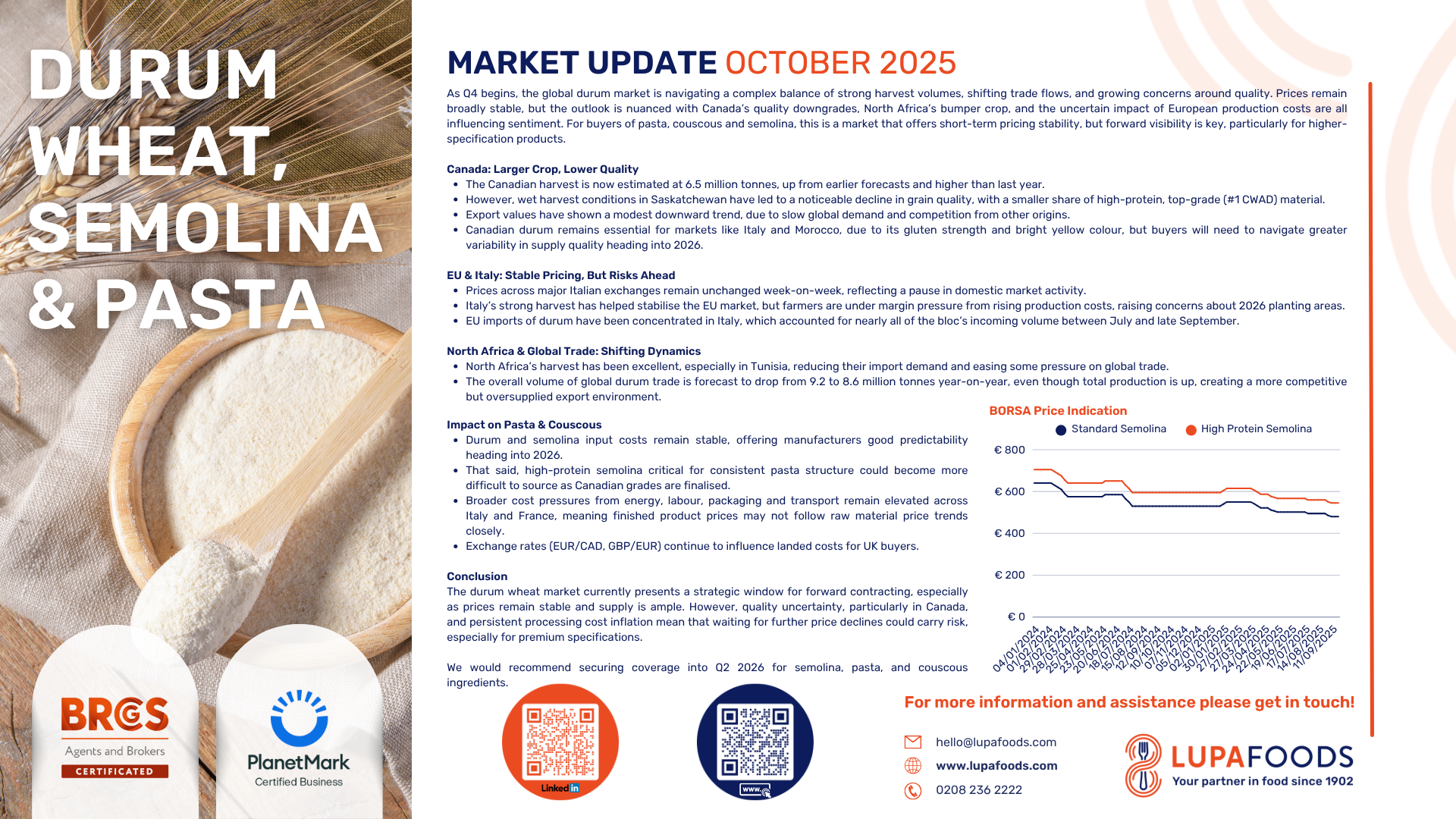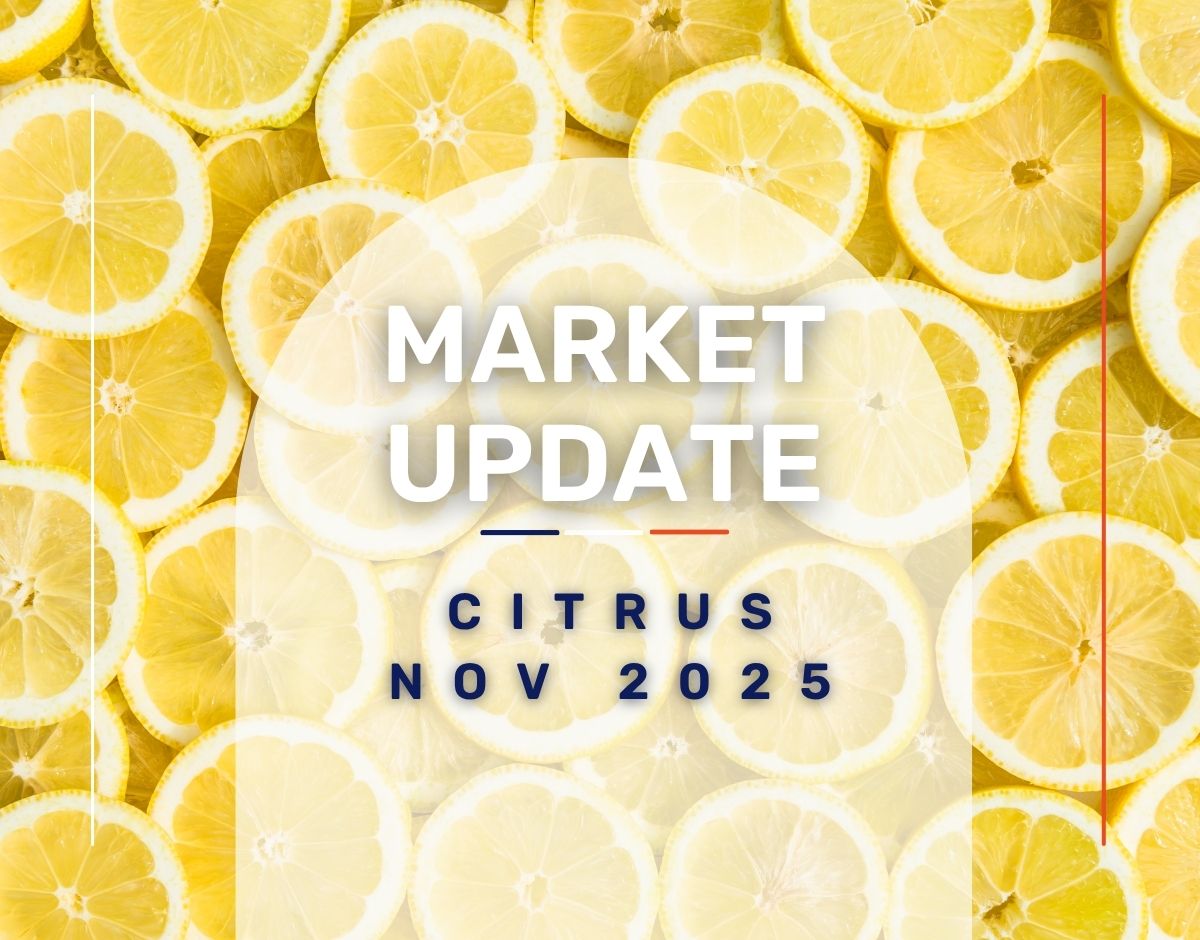As Q4 begins, the global durum market is navigating a complex balance of strong harvest volumes, shifting trade flows, and growing concerns around quality. Prices remain broadly stable, but the outlook is nuanced with Canada’s quality downgrades, North Africa’s bumper crop, and the uncertain impact of European production costs are all influencing sentiment. For buyers of pasta, couscous and semolina, this is a market that offers short-term pricing stability, but forward visibility is key, particularly for higher-specification products.
Canada: Larger Crop, Lower Quality
- The Canadian harvest is now estimated at 6.5 million tonnes, up from earlier forecasts and higher than last year.
- However, wet harvest conditions in Saskatchewan have led to a noticeable decline in grain quality, with a smaller share of high-protein, top-grade (#1 CWAD) material.
- Export values have shown a modest downward trend, due to slow global demand and competition from other origins.
- Canadian durum remains essential for markets like Italy and Morocco, due to its gluten strength and bright yellow colour, but buyers will need to navigate greater variability in supply quality heading into 2026.
EU & Italy: Stable Pricing, But Risks Ahead
- Prices across major Italian exchanges remain unchanged week-on-week, reflecting a pause in domestic market activity.
- Italy’s strong harvest has helped stabilise the EU market, but farmers are under margin pressure from rising production costs, raising concerns about 2026 planting areas.
- EU imports of durum have been concentrated in Italy, which accounted for nearly all of the bloc’s incoming volume between July and late September.
North Africa & Global Trade: Shifting Dynamics
- North Africa’s harvest has been excellent, especially in Tunisia, reducing their import demand and easing some pressure on global trade.
- The overall volume of global durum trade is forecast to drop from 9.2 to 8.6 million tonnes year-on-year, even though total production is up, creating a more competitive but oversupplied export environment.
Impact on Pasta & Couscous
- Durum and semolina input costs remain stable, offering manufacturers good predictability heading into 2026.
- That said, high-protein semolina critical for consistent pasta structure could become more difficult to source as Canadian grades are finalised.
- Broader cost pressures from energy, labour, packaging and transport remain elevated across Italy and France, meaning finished product prices may not follow raw material price trends closely.
- Exchange rates (EUR/CAD, GBP/EUR) continue to influence landed costs for UK buyers.
Conclusion
The durum wheat market currently presents a strategic window for forward contracting, especially as prices remain stable and supply is ample. However, quality uncertainty, particularly in Canada, and persistent processing cost inflation mean that waiting for further price declines could carry risk, especially for premium specifications.
We would recommend securing coverage into Q2 2026 for semolina, pasta, and couscous ingredients.





